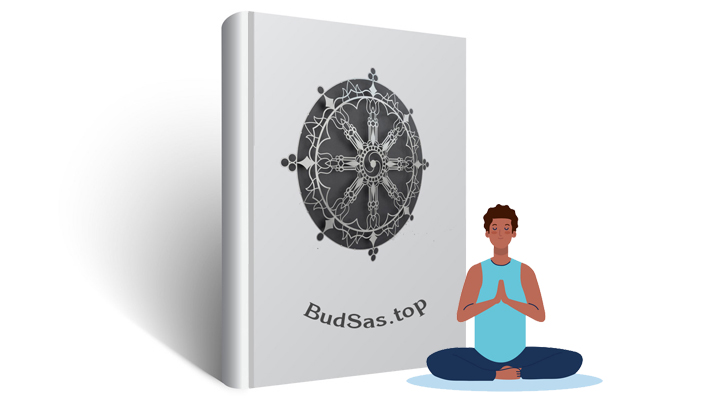The Khuddaka Nikaya, or “Collection of Little Texts” (Pali khudda = “smaller; lesser”), the fifth division of the Sutta Pitaka, is a wide-ranging collection of fifteen books (eighteen in the Burmese Tipitaka) containing complete suttas, verses, and smaller fragments of Dhamma teachings.
The Khuddaka Nikaya can easily be divided into two strata, one being early and the other late. The texts Sutta Nipata, Itivuttaka, Dhammapada, Therigatha (Theragatha), Udana and Jataka belong to the early stratum. The texts Khuddakapatha, Vimanavatthu, Petavatthu, Niddesa, Patisambhida, Apadana, Buddhavamsa and Cariyapitaka can be categorized in the later stratum
This nikaya contains the following texts:
1. Khuddaka-patha (“Short Passages”), a compilation of 9 items, including 10 precepts for novices, a hymn of praise to the Buddha, and verses accompanying oblations to departed spirits.
2. Dhammapada, an anthology of ethical teaching.
3. Udana (“Inspired Utterances”), 82 sayings of the Buddha, mostly in verse, each accompanied by the story of what occasioned it.
4. Itivuttaka (from the words “Thus it is said,” with which each verse begins), a collection, in 112 short suttas, of the Buddha’s ethical teachings in prose and verse.
5. Suttanipata, concerned with the simple faith of a hermit.
6. Vimanavatthu (“Stories of Celestial Mansions”), 85 poems on the happiness of persons reborn in heavenly realms and on the worthy deeds that led to this reward.
7. Petavatthu (“Stories of Spirits of the Dead”), 51 similar poems on those whose misdeeds have condemned them to a sorrowful fate after death. This and the preceding work are among the latest in the canon.
8 and 9. Theragatha/Therigatha (“Hymns of the Elders/Senior Nuns”), lyrics of 264 monks and some 100 nuns. The latter verses are informative about the position of women in ancient India.
10. Jatakas (“Births”), the Buddha’s stories of his former lives.
11. Niddesa (“Exposition”), a commentary within the canon itself, attributed to Sariputta (Shariputra). Its two parts give a philological exegesis of the last two (fourth and fifth) sections of the Suttanipata, discussed earlier.
12. Patisambhida-magga (“Way of Analysis”), a late work consisting of 30 chapters of Abhidhamma or scholastic-like analysis, of various doctrinal concepts.
13. Apadana (“Stories”), a collection of legends about Buddhist saints.
14. Buddhavamsa (“History of the Buddhas”), a narrative in verse in which the Buddha tells of the lives of the preceding 24 buddhas. (Earlier works know of only the last six of these.) The Buddha himself, in former lives, knew and worshiped each of them, and each foretold his future buddhahood.
15. Cariya Pitaka (“Basket of Conduct”), 35 Jataka stories told in verse and emphasizing the paramitas (“perfections”) requisite to buddhahood that the Buddha acquired in former lives.

![[PDF] The book of the Discipline – Vinayapiṭaka – The full 6 Volumes](https://en.namo84000.org/wp-content/uploads/2023/12/The-Book-of-the-Discipline-Vinaya-Pitaka.jpg)


![[En] Guide to Tipitaka](https://en.namo84000.org/wp-content/uploads/2021/10/Kinh-Phat-Quan-trong-2.jpg)